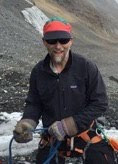(there and) Back again: a Scientist's Journey
The past couple of days have been all about sitting on airplanes,
standing in long immigration and customs queues, and waiting in
airports. The journey back from "The Ice" can be a long one.
Typically it si broken by a night stay here or there; Christchurch is
most common. Our case was different, however, as our flight was
initially scheduled to arrive late in the evening, and was then
delayed 5 hours due to weather in McMurdo...
So here are the legs of travel between McMurdo and Hanover:
1) Fly from McMurdo to Christchurch, NZ on a USAF C-17 (~5 hours)
2) Fly from Christchurch to Sydney, AU, on Air New Zealand (~3.5
hours)
2) Fly from Sydney to Dallas/Ft Worth on Quantas (~15 hours)
3) Fly from DFW to Boston on American (~3 hours)
4) Bus from BOS to Hanover on the Dartmouth Coach (~3 hours).
In the end, we left for the Pegaus ice runway Wednesday evening at about 6:30 pm local
time, which is 17 hours ahead of EST. I finally arrived in Boston at
about 10 pm on Thursday, after a total of about 30 hours of continuous
travel, 26 hours of which were actualy spent flying on airplanes. By
then it was too late to catch the last bus to Hanover, so after a
night in a Boston hotel, I boarded the bus for the final leg home.
That's it for this trip; it's been a whirlwind. Tune in again next time!











